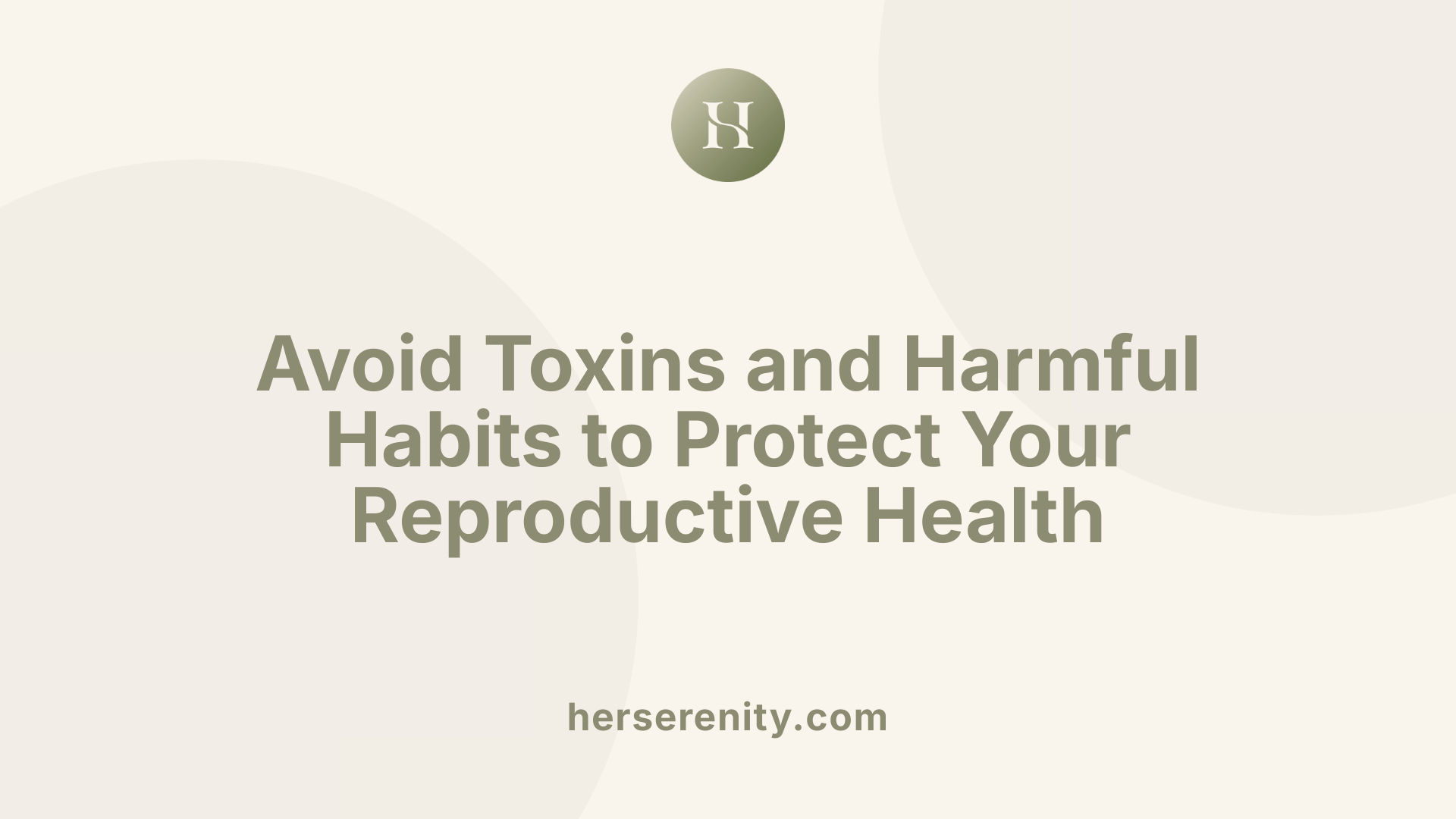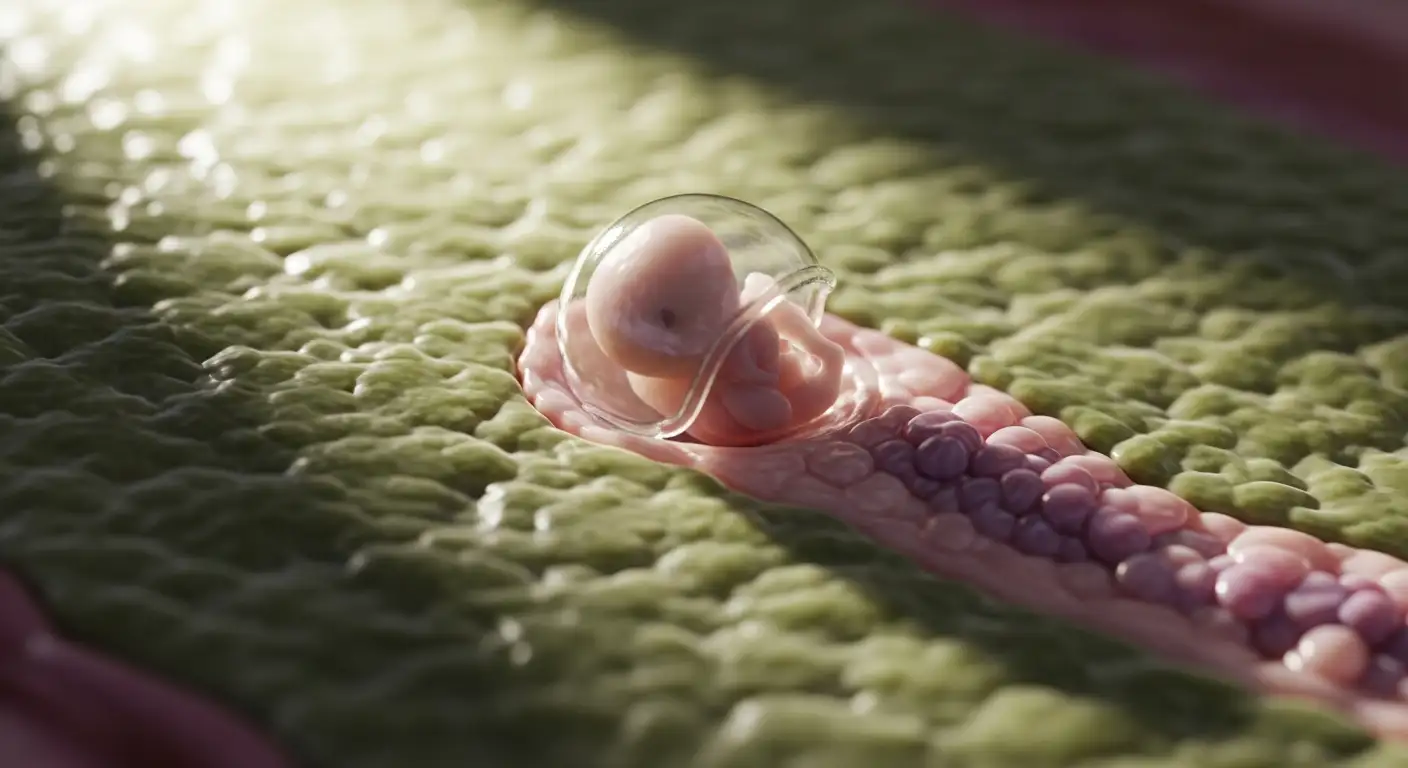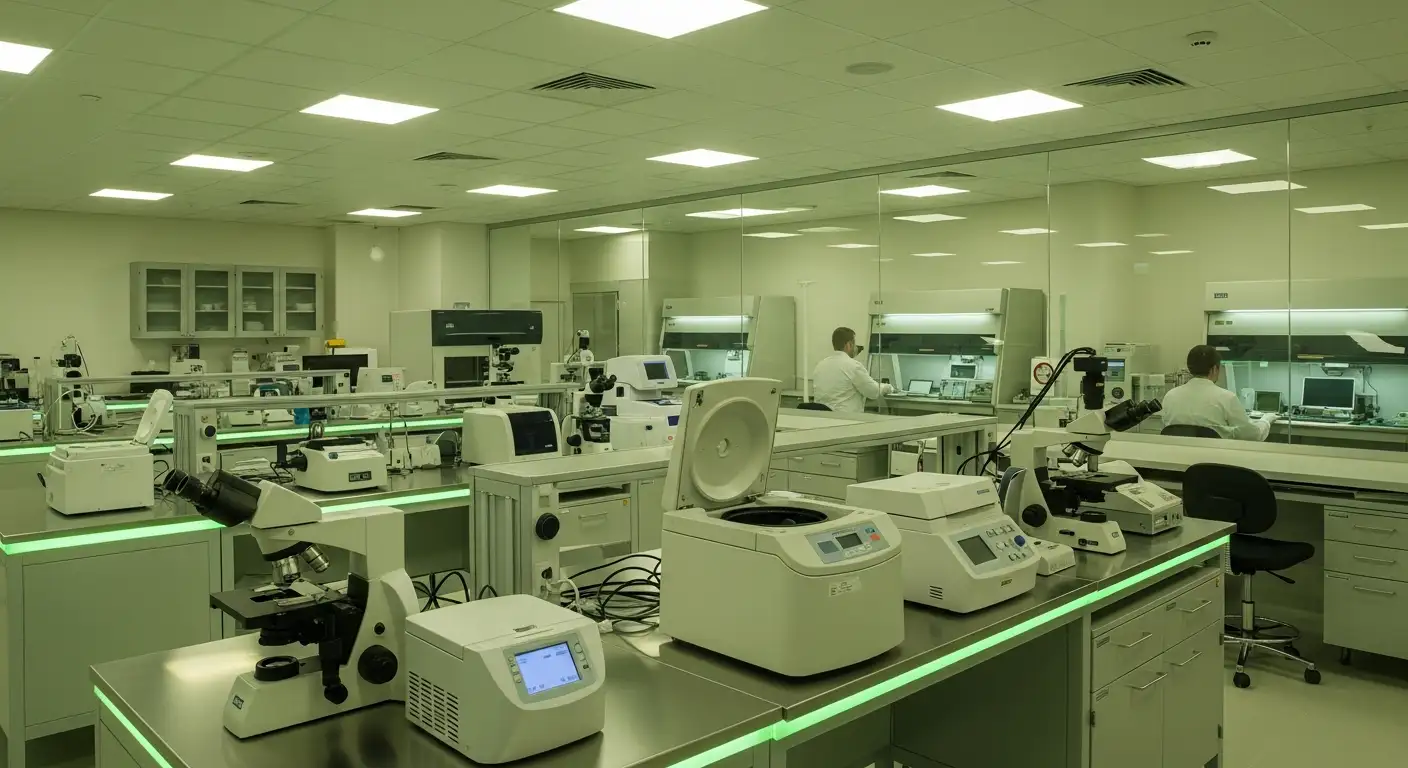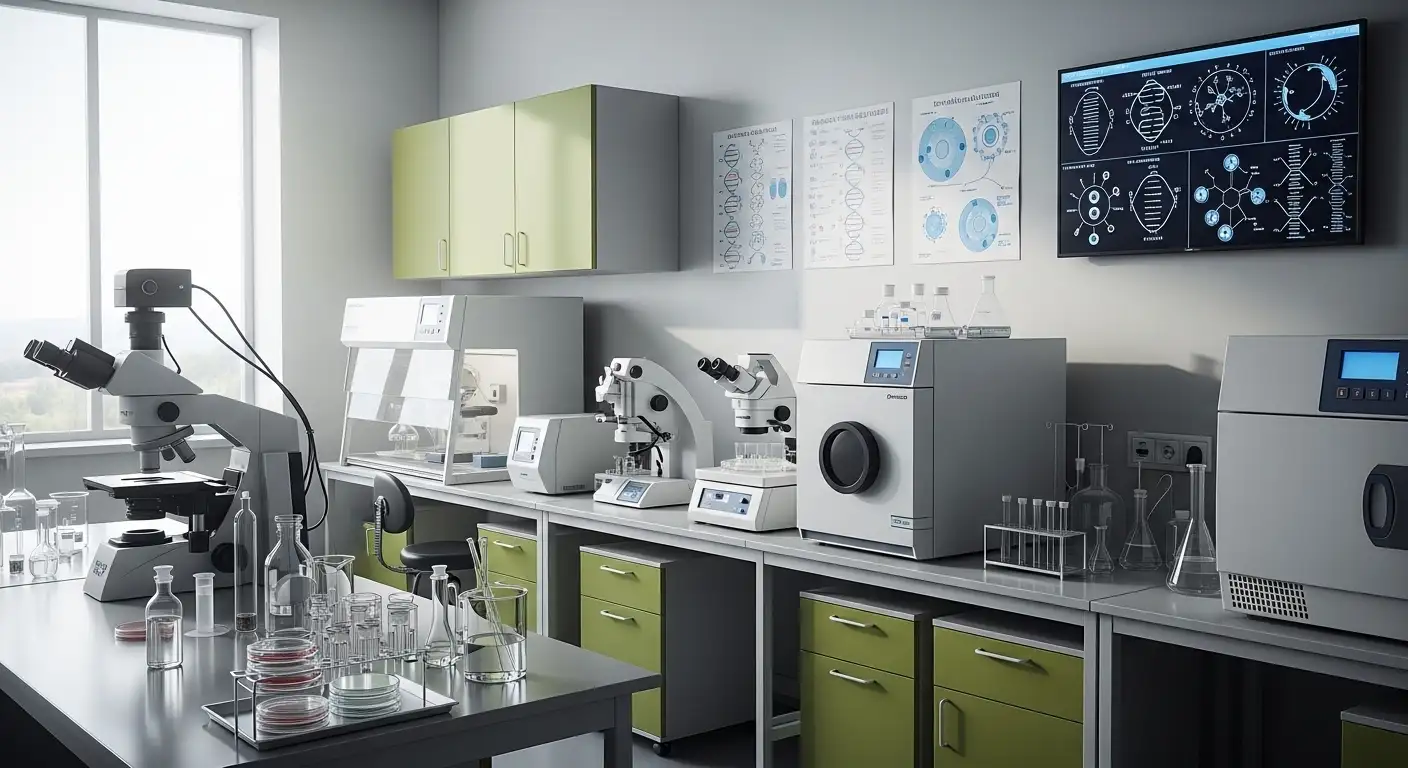How lifestyle changes can enhance fertility outcomes
Empowering Your Fertility Through Lifestyle Choices

Understanding the Role of Lifestyle in Reproductive Success
Fertility is influenced by a myriad of lifestyle factors that can either support or hinder conception. Scientific research consistently highlights the importance of habits such as diet, weight management, stress control, and avoidance of harmful substances in optimizing reproductive outcomes. This article explores how intentional lifestyle modifications can enhance fertility, providing evidence-based strategies for individuals and couples planning to conceive.
The Impact of Diet and Nutrition on Fertility

How does diet, nutrition, and body weight management affect reproductive health and chances of conception?
Maintaining a balanced diet and a healthy body weight are foundational to optimal fertility. A healthy BMI—between 18.5 and 24.9—supports regular ovulation and hormonal balance, increasing the likelihood of conception. Excess weight, particularly obesity, can disturb hormonal regulation, lead to insulin resistance, and contribute to conditions such as polycystic ovary syndrome (PCOS). These issues can significantly impair fertility in women. Conversely, being underweight can suppress ovulation altogether. Weight loss, even modest, in overweight women typically enhances ovulatory function and improves pregnancy chances. For men, a healthy weight correlates with better semen parameters, including count and motility. Adopting nutritious dietary habits, such as consuming foods rich in antioxidants, fiber, and healthy fats, supports reproductive processes. Achieving and maintaining a healthy weight through diet and exercise is therefore essential for improving fertility outcomes.
How do lifestyle factors influence fertility outcomes based on scientific research?
Scientific evidence underscores the influence of modifiable lifestyle factors on reproductive health. Smoking drastically reduces sperm quality and ovarian reserve, while recreational drugs like marijuana and cocaine impair hormonal balance necessary for conception. Excessive alcohol consumption can decrease semen volume, cause sperm abnormalities, and delay conception timelines. Weight extremes, whether overweight or underweight, hinder ovulation and hormonal function. Stress and psychological factors are linked with reduced sperm quality and menstrual irregularities, but practices such as meditation or yoga can mitigate these effects. Regular moderate exercise offers benefits by improving overall health and promoting fertility; however, strenuous activity might inhibit ovulation, especially in women with a healthy BMI. Protecting oneself from environmental toxins, such as pesticides, heavy metals, and endocrine disruptors, also plays a crucial role in preserving fertility. Overall, healthy lifestyle choices—including proper nutrition, stress management, smoking cessation, and environmental awareness—are vital for optimizing reproductive potential.
The Detrimental Effects of Harmful Substances and Behaviors

How does avoiding harmful substances and behaviors impact reproductive outcomes?
Reproductive health is significantly influenced by lifestyle choices, particularly the avoidance of harmful substances and behaviors. Limiting exposure to toxins like pesticides, heavy metals, and endocrine-disrupting chemicals can drastically improve fertility in both men and women.
Substances such as tobacco smoke, excessive alcohol, and recreational drugs have well-documented negative effects on reproductive function. Smoking, for instance, reduces sperm quality, damages ovarian reserve, and increases the risks of miscarriage and birth defects. Alcohol consumption has been linked to lower semen volume, abnormal sperm morphology, and impairs ovulation. Use of recreational drugs such as marijuana, cocaine, and heroin can interfere with hormonal balance and cellular mechanisms vital to conception.
Environmental toxins—including pesticides, solvents, and pollutants—also play a critical role. These substances can be ingested through contaminated food, water, or absorbed via personal care products. Heavy metals and chemicals like BPA, phthalates, and PFAS are known to disrupt hormonal functions, impair gamete quality, and increase the risk of infertility and adverse pregnancy outcomes.
Reducing or eliminating contact with these harmful agents supports healthier reproductive systems. Public health initiatives that educate populations about environmental exposures, along with personal preventive measures such as choosing organic foods, using toxin-free personal care products, and avoiding cigarette smoking or excessive alcohol, are essential.
The benefits of these approaches extend beyond fertility. They promote overall health, reducing long-term risks related to hormonal imbalances and reproductive organ damage.
Implementing strategies to minimize harmful exposures improves the chances of conception, decreases miscarriage risks, and supports healthy gestation. Preventing toxin-related reproductive issues also aligns with efforts to increase natural conception rates and enhance success rates in assisted reproductive technologies.
Impact in numbers and specific cases
| Toxin/Behavior | Effect on Reproductive Health | Consequences | Prevention Strategies |
|---|---|---|---|
| Tobacco smoke | Damages sperm DNA, reduces ovarian reserve | Infertility, miscarriage, birth defects | Quitting smoking, avoiding secondhand smoke |
| Excess alcohol | Impairs sperm and egg quality, hormonal imbalance | Delayed conception, miscarriage, fetal alcohol syndrome | Limit intake, abstinence during pregnancy |
| Recreational drug use | Disrupts hormonal balance, damages cellular functions | Reduced sperm viability, ovulatory issues | Complete cessation, counseling |
| Pesticides and pesticides residue | Endocrine disruption, cellular damage | Decreased sperm quality, ovarian dysfunction | Choose organic produce, wash thoroughly |
| Heavy metals (lead, mercury) | Toxic accumulation damages reproductive tissues | Fertility decline, increased miscarriage risk | Avoid contaminated water, consume safe seafood |
| Endocrine disruptors in plastics (BPA, phthalates) | Hormonal imbalances, altered reproductive development | Impaired fertility, developmental issues | Use BPA-free products, reduce plastic use |
Strategies to Reduce Exposure and Enhance Fertility
- Limit contact with tobacco and recreational drugs.
- Avoid excess alcohol consumption.
- Opt for organic foods to reduce pesticide residues.
- Use environmentally friendly personal care products free from endocrine disruptors.
- Avoid exposure to heavy metals by testing water and avoiding contaminated sources.
- Promote public health policies to reduce environmental pollution.
Broader Impact on Reproductive and Overall Health
Minimizing exposure to harmful substances lays the foundation for healthier fertility outcomes and contributes to fetal health. It also supports the body's ability to maintain hormonal balance, improve gamete quality, and sustain healthy pregnancies.
In conclusion, adopting a lifestyle that limits harmful substances and behaviors not only enhances chances of conception but also promotes long-term reproductive and general health. Increased public awareness, combined with personal preventive measures and environmental policies, are essential steps toward safeguarding reproductive potential.
| Aspects of Lifestyle Impacted by Harmful Substances | Impact on Fertility | Personal and Public Strategies |
|---|---|---|
| Smoking | Reduced sperm and ovarian health | Quitting, avoiding secondhand smoke |
| Alcohol | Hormonal disruption, poor egg & sperm quality | Limit intake, abstain during pregnancy |
| Recreational drugs | Hormonal and cellular damage | Complete cessation, counseling |
| Environmental toxins (pesticides, chemicals) | Increased infertility, miscarriage | Organic foods, toxin-free products |
| Heavy metals | Hormonal imbalances, cellular damage | Testing, avoiding contaminated sources |
Focusing on reducing these exposures supports healthier reproductive systems, improves conception chances, and leads to better pregnancy outcomes.
Practical Steps for Lifestyle Modification and Fertility Enhancement

What practical steps can individuals take to modify their lifestyle habits to improve fertility?
To boost fertility, adopting a balanced and holistic lifestyle is essential. Maintaining a healthy body weight within the recommended BMI range of 18.5 to 24.9 supports hormonal balance and ensures regular ovulation. Achieving this often involves a combination of diet and exercise adjustments.
Eating a diet rich in fruits, vegetables, whole grains, lean proteins, and healthy fats, such as omega-3 fatty acids found in fish and nuts, can significantly improve reproductive health. Supplementation with folic acid, usually 0.4 mg daily before conception, is advisable to support fetal development and prevent neural tube defects.
Regular, moderate exercise—about 30 minutes most days—can promote hormonal regulation. However, vigorous or excessive exercise should be avoided, as it may disrupt ovulation or decrease sperm quality.
Stress management plays a crucial role in fertility. Techniques like meditation, yoga, deep breathing exercises, and ensuring sufficient sleep help regulate hormonal production and reduce anxiety. Avoiding harmful habits such as smoking and recreational drug use is vital. Additionally, limiting alcohol intake to moderate levels and caffeine to less than 200 mg daily reduces negative impacts on fertility.
Protecting against environmental toxins—like pesticides, heavy metals, and endocrine disruptors—and practicing safe sex to prevent sexually transmitted infections like chlamydia and gonorrhea can further enhance chances of conception. Overall, these mutually reinforcing lifestyle modifications establish a supportive environment for reproductive health.
Strategies for Stress Management and Holistic Fertility Support

What strategies for stress management and holistic approaches can enhance fertility?
Managing stress is a vital component of boosting fertility, as chronic psychological stress can negatively impact hormonal balance and reproductive function. Techniques such as mindfulness, meditation, yoga, and deep breathing exercises are effective tools to reduce cortisol levels, a hormone associated with stress, allowing the body's reproductive systems to function optimally.
Mindfulness practices involve paying deliberate attention to the present moment, which helps lower anxiety and improves mental well-being. Yoga combines physical postures with breathing techniques that not only relax the mind but also enhance blood flow to reproductive organs.
Deep breathing exercises, such as diaphragmatic breathing or progressive muscle relaxation, help calm the nervous system and decrease stress hormones. Incorporating these practices into daily routines can create a calming environment conducive to conception.
Besides stress reduction, brain-boosting nutrients and antioxidants play an essential role. A diet rich in antioxidants — found in fruits, vegetables, nuts, and seeds — protects eggs and sperm from oxidative damage. Omega-3 fatty acids, prevalent in fatty fish like salmon, support hormonal balance and reduce inflammation.
Maintaining a healthy weight through proper nutrition and moderate physical activity is fundamental. Both underweight and overweight conditions can disrupt ovulation and sperm production. Achieving and sustaining a healthy body mass index (BMI) enhances reproductive hormone levels and promotes regular menstrual cycles.
Supporting emotional health with therapy, counseling, and support groups helps manage the psychological burden of infertility. Recognizing and addressing feelings of anxiety, depression, or frustration can improve resilience and adherence to healthy lifestyle and treatment plans.
Combining these holistic techniques with medical interventions — such as fertility treatments or medications when appropriate — provides a comprehensive approach to improving chances of conception.
Overall, this integrated strategy emphasizes the importance of mental and physical well-being as foundational elements for reproductive success, encouraging couples to adopt lifestyle changes that nurture both body and mind during their fertility journey.
The Critical Importance of Timing and Fertile Window Identification

Methods to identify fertile windows
Understanding when ovulation occurs is essential for couples trying to conceive. The fertile window is the period during which intercourse has the highest chance of resulting in pregnancy. Several methods are available to detect this critical time, including over-the-counter tools and physiological signs.
One effective approach is using ovulation predictor kits (OPKs), which detect the luteinizing hormone (LH) surge that precedes ovulation by about 24 to 36 hours. Cervical mucus monitoring involves observing changes in cervical secretions; during the fertile window, cervical mucus becomes clear, stretchy, and egg white-like, indicating peak fertility.
Basal body temperature (BBT) tracking is another method, where women record their temperature daily upon waking. A slight increase in BBT (about 0.5°F) typically occurs after ovulation, helping pinpoint the end of the fertile period. Combining these methods can improve accuracy, giving couples a clearer idea of their most fertile days.
Ovulation predictor kits and cervical mucus monitoring
Ovulation predictor kits are user-friendly and provide quick results by testing urine for LH. When used correctly, they can forecast ovulation approximately 12 to 36 hours ahead, allowing couples to plan intercourse accordingly.
Cervical mucus monitoring, often part of fertility awareness methods, involves daily inspection of cervical secretions. A pattern of increasing volume, stretchiness, and clarity signals approaching ovulation. Tracking these changes enables couples to identify their optimal days for conception.
Both methods require consistent daily observation and record-keeping. Combining OPKs with cervical mucus assessment provides redundancy, increasing confidence in fertility timing.
Timing intercourse for maximum conception rates
Timing intercourse during the fertile window significantly enhances the probability of conception. Experts recommend engaging in sexual activity every 1 to 2 days throughout this period to ensure a healthy supply of sperm available to meet the egg.
It is most effective to have intercourse on the days when ovulation is most likely. Detecting the LH surge with OPKs or observing cervical mucus signs can help identify these peak days.
Moreover, maintaining a healthy lifestyle, managing stress, and avoiding lubricants that hinder sperm motility can support fertility during this critical period.
Using these strategies in combination with regular, well-timed intercourse provides couples with the best chances of conception in each cycle. Understanding and implementing timing techniques are vital steps in optimizing reproductive success.
| Method | Best For | Accuracy Level | Additional Notes |
|---|---|---|---|
| Ovulation Predictor Kits | Detecting LH surge | High | Suitable for most women; easy to use |
| Cervical Mucus Monitoring | Observing natural signs | Moderate | Requires daily check and consistency |
| Basal Body Temperature | Tracking temperature rise | Moderate | Detects end of fertile window |
Environmental and Behavioral Factors in Reproductive Health
How do behavioral choices and environmental exposures influence reproductive health?
Reproductive health is significantly impacted by everyday behaviors and the environment in which a person lives. Making healthy behavioral choices is crucial for maintaining fertility and ensuring healthy pregnancies.
Practicing safe sex and managing sexual behaviors are vital steps. Using contraception effectively, avoiding unprotected sex during fertile periods, and seeking prompt treatment for sexually transmitted infections like chlamydia and gonorrhea can prevent damage to reproductive organs. These infections, if left untreated, can lead to scarring and blockages that impair fertility.
In addition, avoiding risky behaviors such as smoking, recreational drug use—including marijuana, cocaine, and heroin—and excessive alcohol consumption are essential. Smoking negatively affects sperm quality, reduces ovarian reserve, and increases the time to conceive. Alcohol intake has been linked to decreased semen volume, abnormal sperm morphology, and longer conception times. Limiting or abstaining from substance use improves reproductive outcomes.
Environmental exposures also play a substantial role. Pesticides, heavy metals, endocrine-disrupting chemicals found in certain personal care products, pesticides, and air pollution can interfere with hormonal balance and fetal development. Chronic exposure to these toxins has been associated with decreased fertility in both men and women.
Limiting exposure to environmental toxins involves measures like choosing organic foods, avoiding pesticide-treated produce, using natural or less harmful personal care products, and reducing air pollution exposure where possible. Proper occupational safety practices should be followed to minimize contact with harmful chemicals.
Timely family planning is another important aspect. Women experience a decline in fertility with delayed childbearing, especially after age 35. Early family planning and awareness of reproductive lifespan can help optimize chances for conception and reduce the risk of infertility.
In summary, behavioral choices regarding sexual activity, infection prevention, substance use, and environmental exposures are modifiable factors that directly influence reproductive health. Awareness and proactive management of these influences can significantly improve fertility and pregnancy outcomes.
| Factor | Impact on Fertility | Recommended Action |
|---|---|---|
| Safe Sexual Practices | Prevents infections that cause scarring and blockages | Use protection and get regular screenings |
| Substance Use | Reduces semen quality and ovarian reserve | Avoid smoking, alcohol, recreational drugs |
| Exposure to Toxins | Disrupts hormonal function, impairs gamete quality | Limit pesticides, chemicals, and pollution exposure |
| Timing of Family Planning | Delays decrease fertility potential | Plan pregnancies early |
Understanding the influence of environment and behaviors empowers individuals to make choices that support reproductive health. Preventative measures and early action can make a substantial difference in fertility outcomes.
The Synergy of Lifestyle and Medical Interventions
What is the role of lifestyle changes combined with medical interventions in improving fertility?
Integrating lifestyle modifications with medical treatments can significantly enhance fertility outcomes. When reproductive issues are diagnosed early, targeted medical interventions—such as hormonal therapies, surgery, or assisted reproductive technologies—can be more effective.
Lifestyle changes, including maintaining a healthy weight, following a balanced diet rich in fruits, vegetables, legumes, and healthy fats, and reducing caffeine and alcohol intake, support these medical efforts. Managing stress through techniques like yoga, meditation, or counseling can improve hormonal balance, which is vital for ovulation and sperm production.
Avoiding harmful substances such as tobacco, recreational drugs, and environmental toxins further sustains reproductive health. Regular moderate exercise helps improve blood circulation and hormonal regulation without causing exhaustion or hormonal disruptions.
Early detection of issues like ovulatory disorders, tubal blockages, or low sperm count allows for timely interventions combined with lifestyle adjustments. This holistic approach can address root causes, improve the success rates of fertility treatments, and support overall reproductive well-being.
Moreover, educating couples about fertility-awareness methods, like ovulation predictor kits and cervical mucus monitoring, empowers them to time intercourse optimally, which boosts natural conception chances.
When medical treatments are complemented by lifestyle enhancements—such as taking prenatal supplements with folic acid, optimizing sleep, and reducing exposure to endocrine disruptors—the probability of creating a healthy environment for conception increases.
Therefore, a combined strategy that marries early diagnosis, medical intervention, and healthy lifestyle practices forms a comprehensive plan to improve fertility outcomes and foster healthier pregnancies.
| Aspect | Explanation | Additional Details |
|---|---|---|
| Early diagnosis | Identifying issues promptly | Enables targeted treatments |
| Lifestyle modifications | Diet, weight, stress, substances | Supports medical success and hormonal health |
| Medical treatments | Hormonal therapy, surgeries, ART | Address specific reproductive disorders |
| Holistic approach | Combining both strategies | Boosts overall fertility and well-being |
| Outcomes sought | Increased conception rate, healthier pregnancies | Better maternal and fetal health |
Successfully combining these elements provides a full-spectrum approach. It optimizes bodily conditions for conception, minimizes risks, and supports a healthier reproductive process that benefits both men and women on their journey to parenthood.
Empowering Informed Choices for Reproductive Success
Adopting positive lifestyle modifications rooted in scientific evidence can significantly enhance fertility outcomes. From nourishing the body with a balanced diet to managing stress and avoiding toxins, each step contributes to healthier reproductive function. Early planning, behavioral awareness, and holistic strategies foster not only conception success but also long-term reproductive health. Empowered with knowledge and practical habits, individuals and couples can optimize their chances of achieving a healthy pregnancy and enjoying the journey to parenthood.
References
- Effects of lifestyle factors on fertility: practical ...
- Female fertility: Why lifestyle choices count
- Optimizing fertility Part 1: Evidence-based lifestyle changes
- Lifestyle changes that can help improve fertility
- Optimizing natural fertility: a committee opinion (2022)
- Lifestyle factors and reproductive health: taking control ...
- Lifestyle Factors That Can Affect Fertility and How to ...


































































































